Introduction
Hardware Labs Nemesis 360 GTS Radiator Review
The intention of this write up is to provide information and performance data about the Hardware Labs Nemesis 360GTS Radiator for inclusion in the Extreme Rigs Rad Round Up 2015, however in this review rather than comparing the Nemesis 360GTS to all the rads we made a decision to start a Round-Up just for the Slim 360mm rads. Expect our Slims Round-Up to be published in the coming weeks.
I’ll be keeping the review section short and factual, focusing on presenting the performance data compiled through the numerous tests carried out. First of all a big thanks to Hardware Labs for providing this sample of the Nemesis GTS.
What’s in the box?
The Nemesis 360GTS sample sent by Hardware Labs came in full retail packaging.
The front of the outer sleeve leaves us in no doubt as to what is inside. On the back we find some tech drawings and list of features.
Removing the outer sleeve we find a sturdy shipping box with a sticker seal that gives us a warning about using correct length screws.
On the sample I received for testing the flaps on the inner box have potential to cause damage to the fins during packaging and/or shipping. Hardware Labs was aware of the problem and have made moves to have the packaging tweaked to avoid this issue. Hopefully this change will include a foam liner on top or a bubble wrap bag. The lift up flap at one end for the screws is perfect, keeping the screws away from the precious core.
Extent of Delivery:
1x Radiator
12x M4 x 28mm black Phillips slotted pan head screws.
12x M4 x 5mm black Phillips slotted pan head screws.
Onwards to technical specifications!
Technical Specifications
Technical specifications as listed by Hardware Labs:
- 120 mm x 3 fan slim form factor two-pass radiator
- 398mm x 133mm x 29.6mm (L x W x H)
- 16 FPI 25 Micron Copper Fins
- Now optimized for sub-800 rpm ultra-stealth fans
- Supercruise optimizations for scalable performance with higher speed fans
- 15% more tubing area in the same Black Ice® GTS™ 360 form factor
- Increased internal coolant flow rates
- Standard G 1/4″ inlet/outlet fittings
- Standard M4 mounting threads
- Compatible with Black Ice® Pro III, Black Ice® GTS™ 360 radiators
- Custom Dark Matter™ high quality finish
- Fully ROHS Compliant
- 100% Made from conflict-free materials
- Industry standard Black Ice® quality
- Lifetime warranty against manufacturing defects*
Dimensions Measured on the radiator tested (retail unit):
Radiator Core Dimensions:
Finish and Features
The fin spacing is fairly uneven up and down the tubes with 15 FPI – 16 FPI being measured in numerous places on the core.
The uneven fin distribution is to be expected with medium to high density fin designs.
Finish
“Dark Matter” – This powder-coat finish will not be to everybody’s liking as it is uneven and rough. This is a deliberate finish style by Hardware Labs and at first I really disliked but after having a couple of them floating around the work area for a few weeks this Dark Matter finish has grown on me. 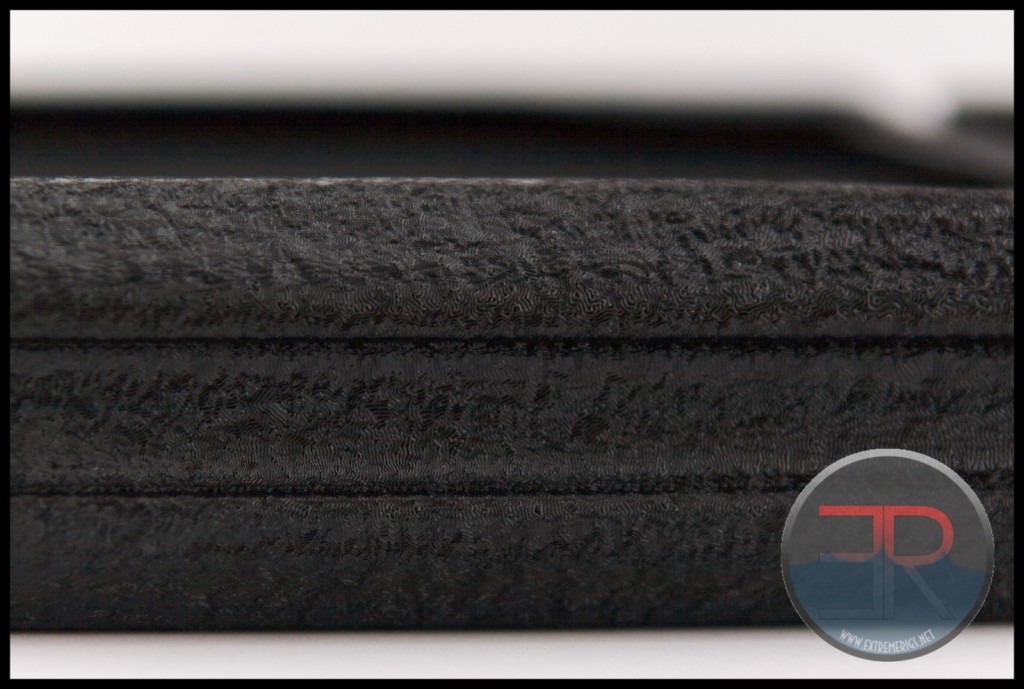 I now like the way it seems to shimmer as light reflects off the uneven surfaces.
I now like the way it seems to shimmer as light reflects off the uneven surfaces.
I do like a good matte black finish so I was pleased to hear reports of European release of the Nemesis Radiator range having a Matte Black finish, leaving it as an import option
The Nemesis 360GTS stays true to Hardware Labs industry leading standards for build quality. It feels solid, all the joins look great and it has a little weight to it.
The choice of M4 threads for fan mounting is my favorite. The stealth design means that there is not much depth to the inbuilt shroud on each side (5mm) but there are protector plates to help prevent damage from attempting to use incompatible length screws.
Let’s see how it performs…
Flow Performance
The Data
As all the testing in this round up was performed with the exact same equipment, using the exact same methods I have decided to keep each radiators page uncluttered by posting our testing methodology, test set-ups and equipment used in a single location. To see exactly how the tests were carried out, details of the test set ups and equipment used, please head back to the RRU’15 Test Equipment Page.
Restriction Test
It’s generally agreed that radiators are one of, if not the least restrictive components in the water cooling loop. There are some exceptions however, so this must still be verified through testing:
Above we see the first rad to have bested the Iwaki RD30 and not reach the maximum reading on the 3.5 GPM King Flow meter. This puppy has some restriction it seems!
Below I took a shot of the Iwaki in action I cranked it with 24 Volts to see the resulting system pressure. The system pressure is not part of any of the test results but I found it interesting as it is the highest ever pressure reading for a radiator on the test bench.
Here is the raw data at the tested flow rates, displaying the measured Differential Pressure across the radiator as flow rate was increased.
The table numbers indicate that the Nemesis 360GTS is a highly restrictive radiator. However numbers in isolation can only tell half the story. By plotting against other components it more easily shows the whole story.
I have decided to use a HeatKiller 3.0 CPU block as the reference in these plots for two reasons. Firstly there is no chance of the plot being cluttered by curves overlapping and secondly it gives a reference point against a fairly common loop component of average restriction.
As with all the radiator restriction plots I have limited the maximum flow rate displayed to 2.0 GPM as I suspect there are very few systems that operate above 2.0 GPM. For more information on how to read a restriction plot check out our guide.
Now when I said the plot lines would not be cluttered I had not envisaged a rad in the test group to be as restrictive as the Nemesis 360GTS is. From the above plot it can be seen that it is slightly more restrictive than the HeatKiller CPU block (up to 1.1 gpm) – the only radiator in the group (at the time of testing) to return such results. This plot shows us that the GTS is a medium restriction component as it is fairly even with the “average” restriction reference block.
Let’s see how it fares against the other radiators in the test group.
The next three plots show the GTS’s restriction level relative to other slim radiators in the test group at 3 different flow rates – what we consider to be low, medium and high system flow rates.
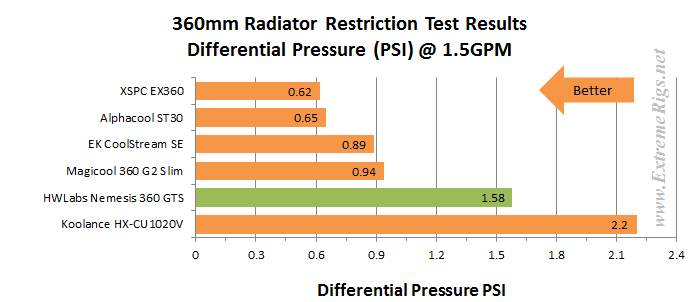 From these tables it would be fair assessment to call the GTS a medim to high restrictive radiator when compared to the other slims, but before we make that conclusion let’s take a quick look at the restriction levels all our 360 rads at 1.0 gpm.
From these tables it would be fair assessment to call the GTS a medim to high restrictive radiator when compared to the other slims, but before we make that conclusion let’s take a quick look at the restriction levels all our 360 rads at 1.0 gpm.
Clearly the Nemesis GTS is a very restrictive radiator at about 7 times the level of least restrictive radiators.
Our previous restriction assessment on the 360GTS is out the window and clearly demonstrates Sometimes we do need to look at a larger data set to come to accurate conclusions.
We would consider this unacceptably restrictive for a radiator. Care will have to be taken with loop design.
Onwards to Thermal Performance!
Thermal Performance
The Thermal Data
Moving on from the restriction test bench the GTS radiator was loaded into the thermal test chamber for a series of 9 tests – consisting of 3 flow rates, each having 3 different fan rpm rates tested. I felt the thermal test data was most important and which you as the reader would be most interested in.
Below is the final data results gathered from at least 2 data logging runs at each flow rate and fan rpm combination. The most stable 15 minute period from each logging run was used and then averaged with the other runs to obtain the data for the table below. A total of 16 temperature sensors were used in the thermal test chamber (8 air in, 2 air out, 3 water in, 3 water out) each take a reading every second and logged via a CrystalFontz unit. The data in the table below is the result of the logging runs which has then been used to create all the plots and tables there-after.
The performance metric of critical importance is the delta between the warm coolant temperature in and the cold ambient air temperature in to the radiator. Given that the system is well insulated and in equilibrium and we know the heat input to the system then we can also calculate a very important number – that is the amount of power required to raise the coolant temperature 1C (or 10C which is more useful reference point).
Let’s take a look at the Delta T results from the tests.
So the Delta T’s were not greatly affected by varying flow rate. However Delta T is not always helpful when thinking about how many radiators you would need to cool your system. Instead it’s more useful to know the delta/W, or more usefully, the inverse metric of W/delta C.
The metric plotted below tells us how many watts are dissipated by the radiator when the coolant rises 10C above ambient temperatures. (10 Delta T):
As expected increasing fan speed and therefore airflow through the radiator is the primary determinant in changing the radiators performance. Of special note here is the 1.0 GPM Push Only results are equal to and higher the 0.5 GPM Push/Pull at medium and high fan speeds. In fact we could could say there is very little variance between the flow rates at each fan speed.
This data can now be plotted as a pretty curve so that an end user can interpolate their own fan speed. Note again that the extrapolation of the curve is much more sensitive to error than in between the tested range.
This makes it easier to see that at higher fan speeds that a low flow starts to impact the cooling performance. This makes sense if you take it to the extreme and think about a very low flow rate where the coolant is already cooled 99% of the way to ambient with 10% of its journey through the radiator. In this example the radiator is not being efficiently used. 90% of the radiator surface area would then be wasted and you could have used a smaller radiator.
If we now come back to the push data it’s good to compare only the push to push/pull data in an “apples to apples” fashion by only looking at the 1GPM data:
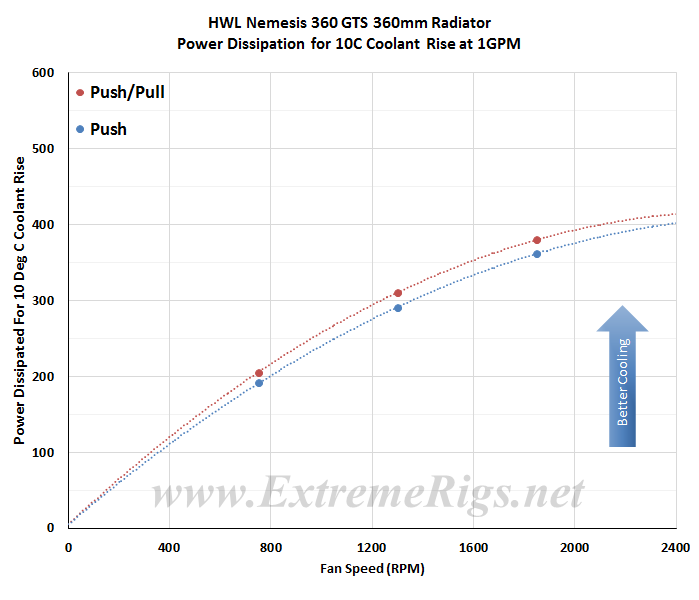 Push Only gives around 94% (averaged) of the performance of the Push/Pull 1.0 gpm test results on this radiator.
Push Only gives around 94% (averaged) of the performance of the Push/Pull 1.0 gpm test results on this radiator.
In this next chart all three Push Only results at 1.0 GPM flow rate were plotted to produce one curve and we compared the results against the other slim rads Push Only results.
While the margins look small the GTS360 is a clear leader with fan sppeds from very low almost up until the high speed where the very high FPI Koolance rad takes over.
Now let’s compare Push vs Push/Pull:
For the Push/Pull comparison chart we have averaged the 3 fan speed test results at each flow rate to produce the curves. Averaging reduces test error of course so this helps further to be sure of our data and is more useful therefore for comparing to other radiators.
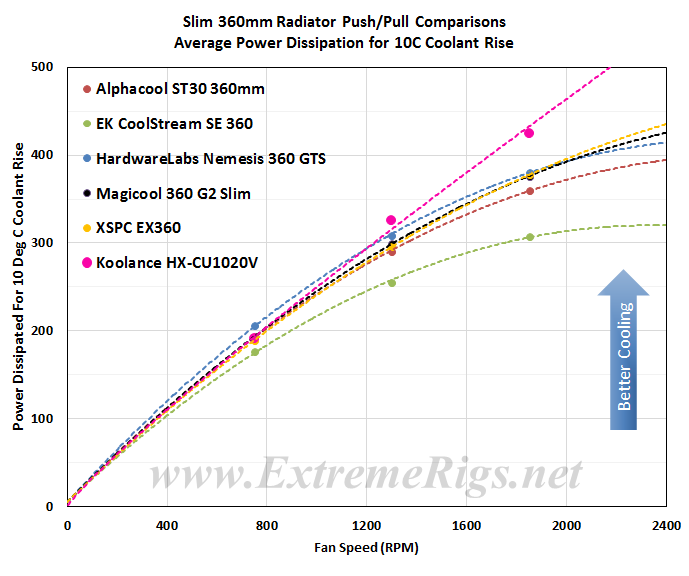 At low to medium fan speeds the 360GTS is again the leader of the tightly grouped pack. As with most slimmer radiators the difference is small.
At low to medium fan speeds the 360GTS is again the leader of the tightly grouped pack. As with most slimmer radiators the difference is small.
Now let’s analyze that data some more….
Data Analysis
This first table shows the Nemesis 360GTS’ Watts/10 Delta Temp numbers in a quick glance chart format.
Using the data compiled from the Nemesis GTS thermal testing I have compiled the following tables in an attempt to show another way how the GTS performance varies against itself at the flow rates and fan speeds tested. Effectively these show percentage gains relative to a reference point. It’s an interesting way to show gains/losses while changing a variable.
First let’s focus on 1300 RPM as our reference and see how much gain or loss in performance we get by changing fan speed.
Neutral tones here indicate the 360GTS is tuned for best performance somewhere around this 1300rpm fan speed range. In the next plot we focus on changing the flow rate with 1.0 GPM as the base line.
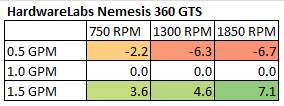 In this we see similar percentile gains and losses so we conclude that the 360GTS is very well tuned to be able to perform well at all flow rates.
In this we see similar percentile gains and losses so we conclude that the 360GTS is very well tuned to be able to perform well at all flow rates.
Lastly, we change the reference and choose our center 1300 RPM and 1.0 GPM as our reference point to show both effects concurrently:
So from the data above we can get a very good idea of how the Nemesis GTS radiator performs relative to itself. But there is a large selection of 360mm radiator models to choose from, released from numerous manufacturers. So, we need to start comparing performance between them.
Push Only Data vs Competition
Let’s focus on the Push Only results for now and come back to the Push/Pull data later. While for Push/Pull we tested three flow rates, the Push Only testing was conducted only at 1GPM in order to save time. For a comparison vs thicker radiators make sure to check out the 2015 Rad Round Up which compares 27+ radiators including the SE.
Let’s start with 750 RPM and see how it compares to the competition:
At 750RPM the GTS performance is excellent, have a clear performance advantage over the rest.
How does the GTS360 perform with 1300 rpm fans.
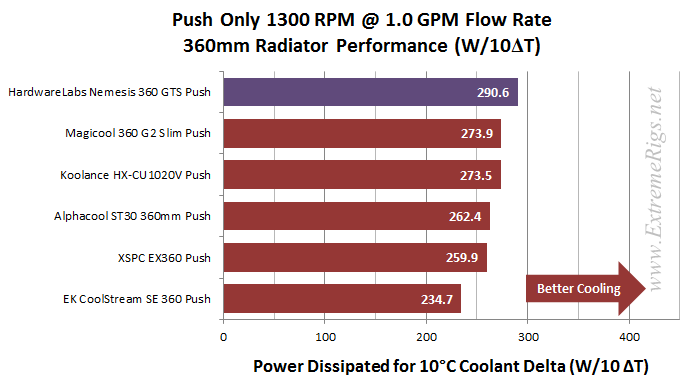 At 1300 RPM it still has a clear advantage over the rest of the field.
At 1300 RPM it still has a clear advantage over the rest of the field.
And at 1850 RPM…
At 1850RPM the still has great performance for a slim rad, but we see the very high FPI Koolance rad outperforming everything else.
So the 360GTS was a fantastic performer in Push Only. The fan speeds made little difference to its comparisons against the competition and only the brute force nature of the Koolance design saw the GTS taking a clean sweep. We would expect the same comparison trends to continue in Push/Pull.
Let’s find out how it fared…..
Push/Pull Data vs. Competition
Let’s now look at the Push/Pull results and see how the 360GTS compares. For Push/Pull we have averaged the results from the 3 flow rates at which we tested.
At 750RPM the 360GTS continues to dominate the middle pack, which all have very similar results.
At 1300 RPM Push/Pull.
Things do change here with the Koolance taking over the lead and has a 5% advantage over the 360GTS.
1850 RPM and again the 360GTS takes second place, just holding off the rads behind it, while falling a bit further behind the winner with a 10% gap between the two.
Let’s also combine the Push Only and Push/Pull results at the 1.0 GPM flow rate into one plot for each fan speed tested. These plots show just how well the best slim radiators performed against the competition, while clearly showing the SE’s lack of performance.
Again the 750 rpm first:
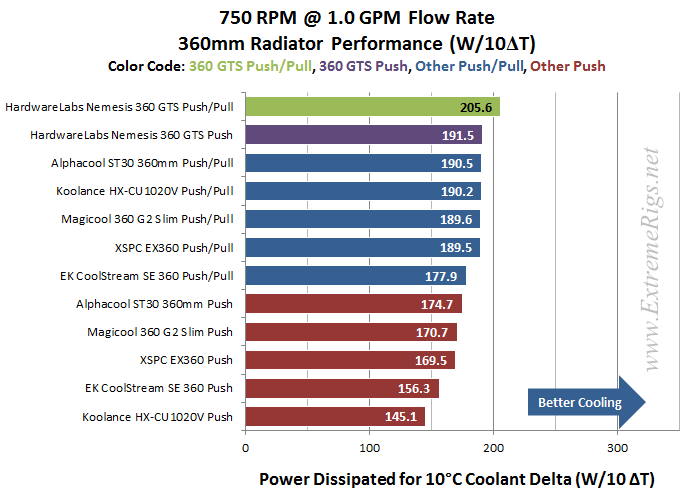 What an amazing performance with the 360GTS taking 1st and 2nd place. Think about that for a second, the 360GTS’ Push Only results beat all other Push/Pull results – that is almost unbelievable, but that is exactly how the results ended up.
What an amazing performance with the 360GTS taking 1st and 2nd place. Think about that for a second, the 360GTS’ Push Only results beat all other Push/Pull results – that is almost unbelievable, but that is exactly how the results ended up.
1300 RPM Combined
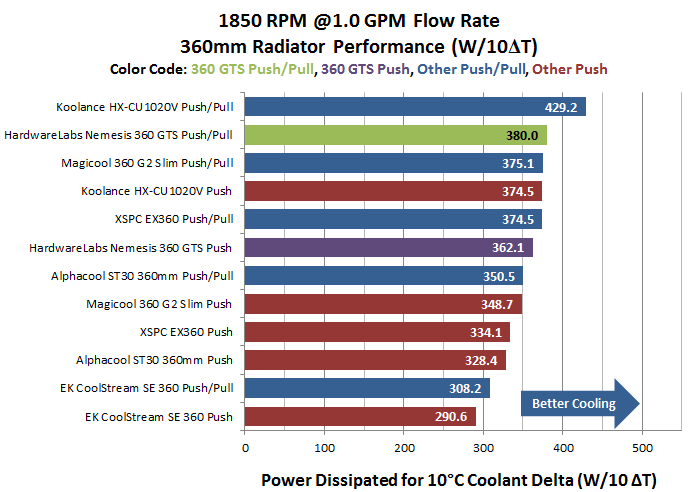 The 360GTS’ performance is still excellent at 1850 RPM, but we can see the Koolance is dominating the field.
The 360GTS’ performance is still excellent at 1850 RPM, but we can see the Koolance is dominating the field.
From all of these results we created a “Performance Factor” ranking system. The radiator with the best cooling ability (W/10ΔT) at each gpm/rpm combo was awarded a score of 100, and each other radiators W/10ΔT result was scored as percentage of the top performer:
This way of looking at the comparison takes away any advantages that a radiator may have at higher or lower fan speeds and looks at an overall average. While this appears fair it does tend to favor those radiators that are all-rounders and those radiators which do very well at high RPM. Most users should be more focused on their specific use case. Check in the Round Up for performance comparisons at every gpm/rpm combo for even more details and cross comparison results.
Here is the 360GTS’ Push/Pull percentage scores at each data point that thermal tests were conducted at and additionally the 1.0 gpm Push Only percentages relative to the winner at each fan speed.
Looking at the results this way we can see how the 360GTS dominated the low fan speed / low pressure tests with 5 out of 6 1st places in the Push Only and low fan speed Push/Pull results.
Then we started averaging the percentage scores at each flow rate giving us the Averaged Performance Factors of each radiator.
Firstly – the Push Only APF:
The 360GTS Push Only results were outstanding and was a clear winner !!
Now the Push/Pull APF:
 The Push/Pull APF win was taken by tyhe Koolance and it’s very high FPI core structure. The 360GTS places a very respectable 2nd place with a clear performance edge over those behind it.
The Push/Pull APF win was taken by tyhe Koolance and it’s very high FPI core structure. The 360GTS places a very respectable 2nd place with a clear performance edge over those behind it.
Finally we created the Master Performance Factor which is calculated from the averaged results of all the thermal tests, Push and Push/Pull at all flow rates and all fan speeds.
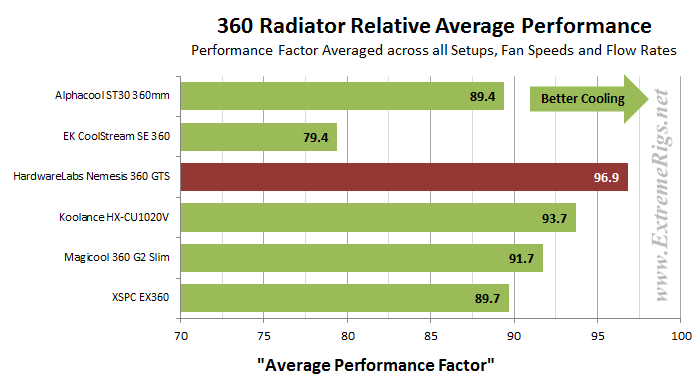 With its excellent results in all the thermal test the 360GTS is a clear winner in the Master Performance Factor and takes the best overall rad of the 360mm slim rads in the test group.
With its excellent results in all the thermal test the 360GTS is a clear winner in the Master Performance Factor and takes the best overall rad of the 360mm slim rads in the test group.
Next up – Summary!
Summary
Thermal Performance
Thermal Performance scores are derived from the relevant Performance Factor scores. We set this scale with 72.5% and below as the 0 mark, with each 2.5% increase from 72.5% in relative performance adding 0.5 to the awarded performance score.
The Bold Scores are based on performance comparisons of only the slim 360mm Rads. On the second line is the score which is generated against all the 360mm rads from the complete round up.
Push Only Thermal Performance
- 5.0/5 – Slims Only 360mm rads.
- 3.5/5 – all 360mm rads
The Nemesis 360GTS’ Push Only thermal performance was outstanding, taking 2 wins and a second place in the 3 tests conducted. The amzing 98.9 comparative performance factor score equated to a perfect Push Only score of 5.0
Push/Pull Thermal Performance
- 4.5/5 – Slims Only 360mm rads.
- 2.0/5 – all 360mm rads
The Push/Pull performance was excellent and placed 2nd with a generated P/P AFP score of 94.8, just short of another perfect summary score.
Overall Thermal Performance
- 4.5/5 – Slims Only 360mm rads.
- 3.0/5 – all 360mm rads
With the Push Only and Push/Pull results it would be quite amazing if the 360GTS placed anywhere other than 1st in overall results. It’s excellent all round results landed the 360GTS with a clear win and it’s 96.98 Master Performance Factor score means that 4.5/5 score is the end result.
This was one of the two very restrictive radiator of the test group, being about equal in “restrictiveness” to an average CPU block.
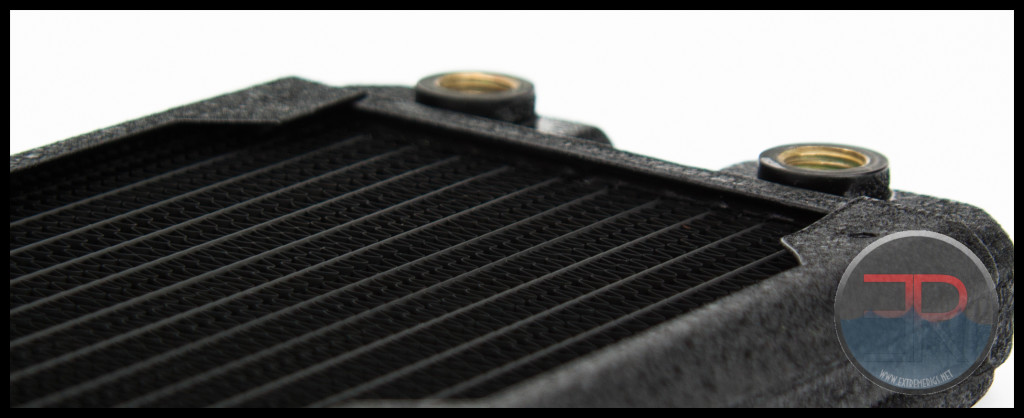 Features & Quality – 4.0/5
Features & Quality – 4.0/5
The build quality and finish on the Nemesis 360 GTS is excellent. Hardware Labs have a reputation for producing excellent quality radiators and this one does not let the side down. I could not fault the build quality in any way.
The “Dark Matter” textured finish won’t be to everybody’s taste (it grew on me) but normal paint options are available. From at least one online store standard paint is now available in a variety of colors.
A core design with 16 FPI would normally favor higher speed fans, but being a stealthy slim radiator that was not the case here as seen in the performance summary above. The high FPI count does however mean that you’ll need to be doing maintenance more frequently – removing all those dust bunnies.
There are just 1 inlet port and 1 outlet port option. There are protection plates in place for fan screws.
Summary – Silver Award and “Best Slim Radiator”
The Hardware Labs Nemesis 360GTS is an excellent choice where space limitations are a concern. It’s build quality and finish lives up to HWL industry leading standards. It’s the all round top performer in the slim radiator category and bt far the best Push Only rad of the group. Hard to go past this one if it fits your build’s requirements of a stealthy slim radiator.
Where to buy: $63 – PPCS







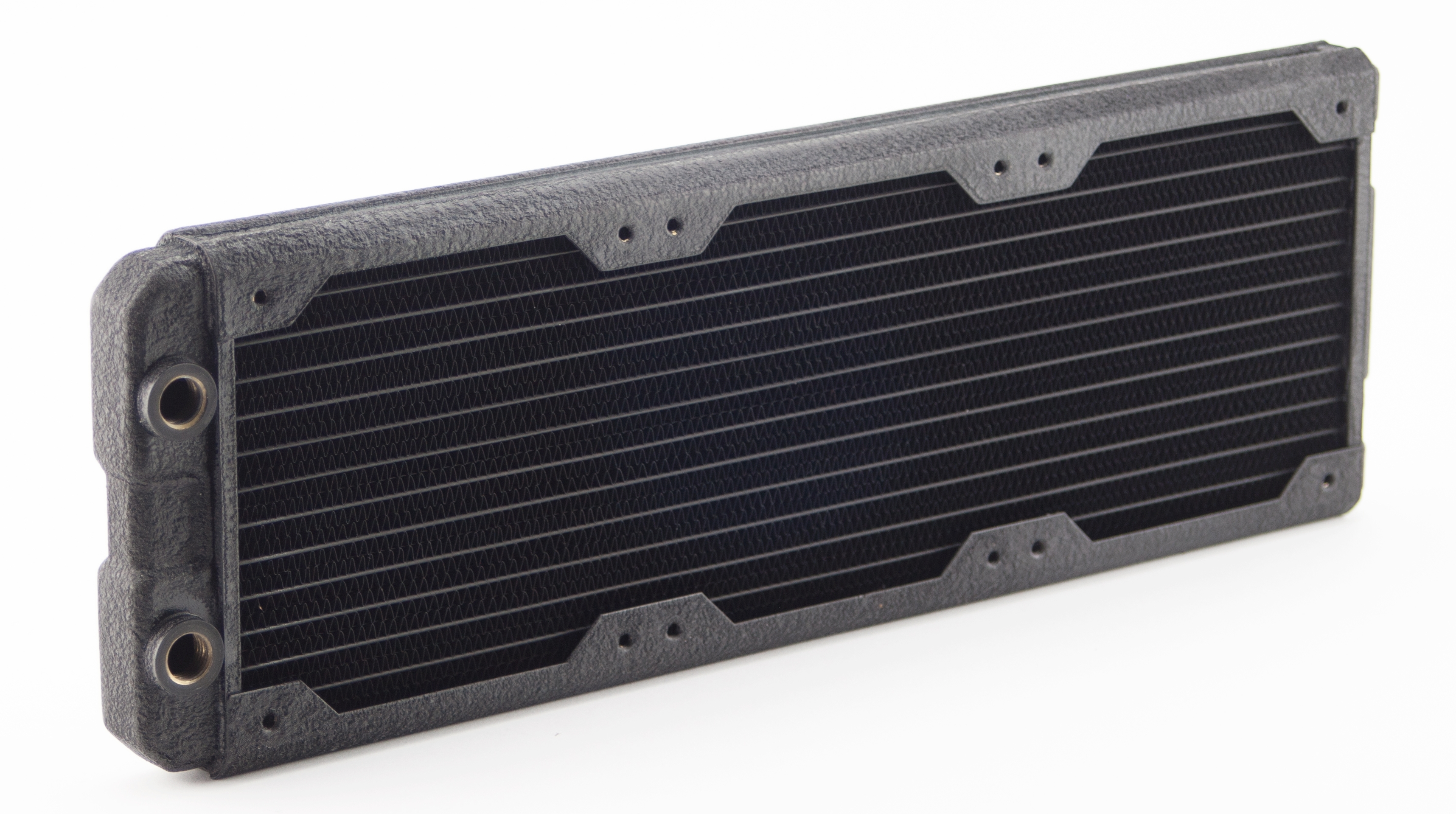
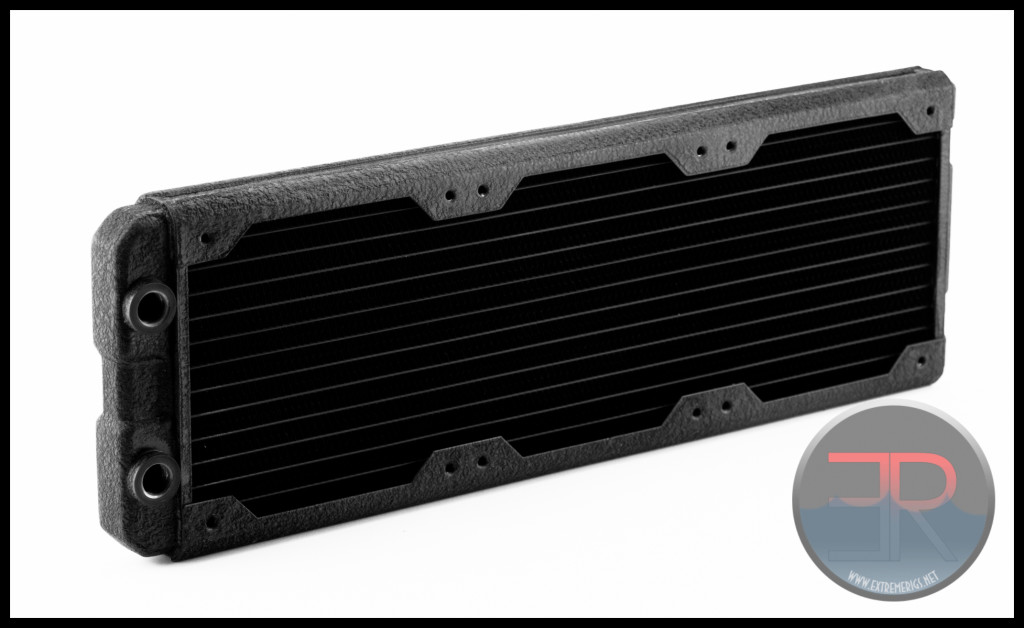
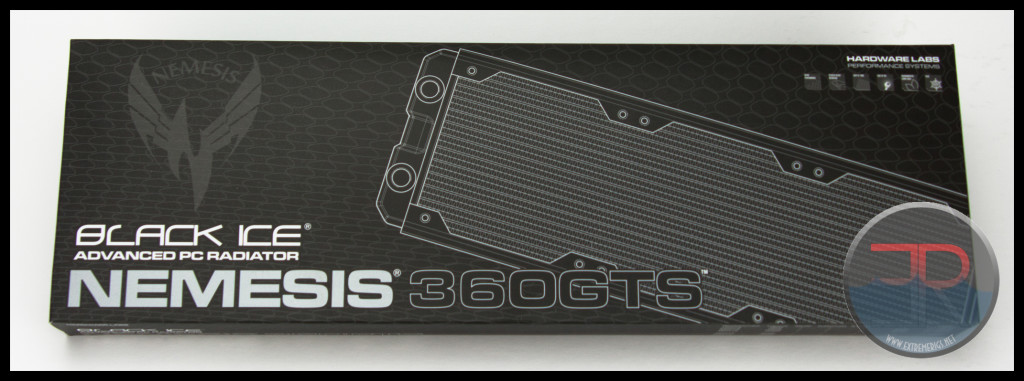
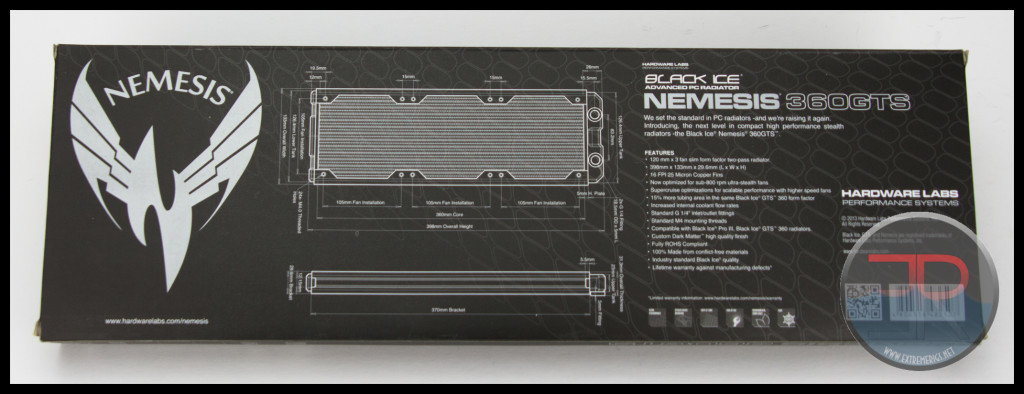
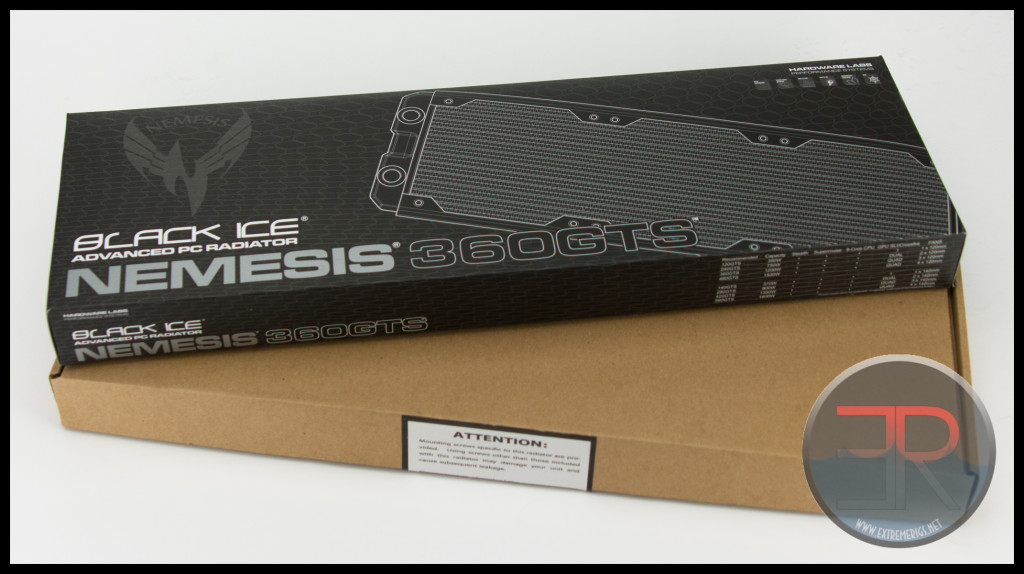
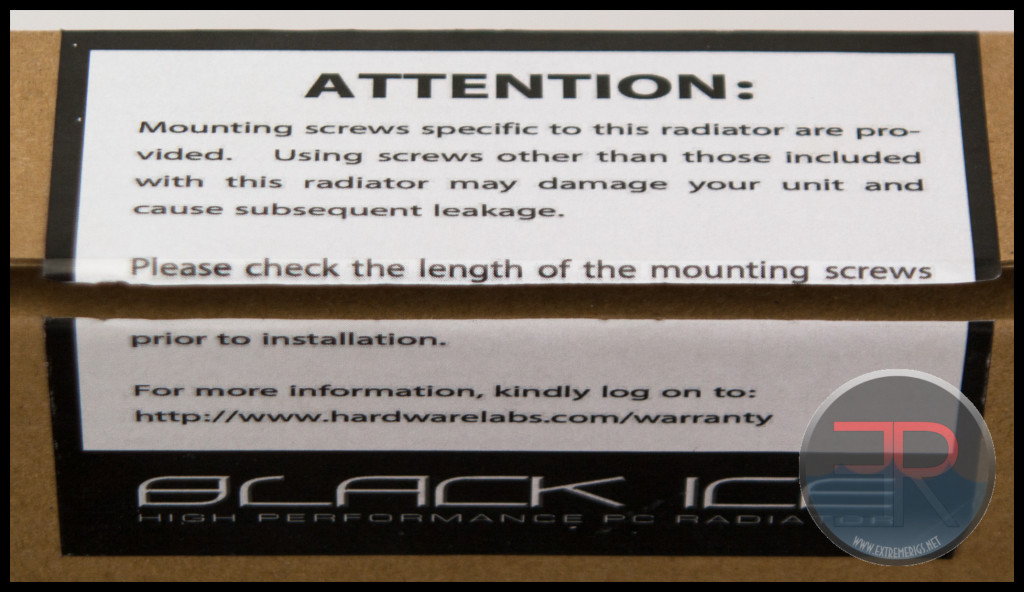
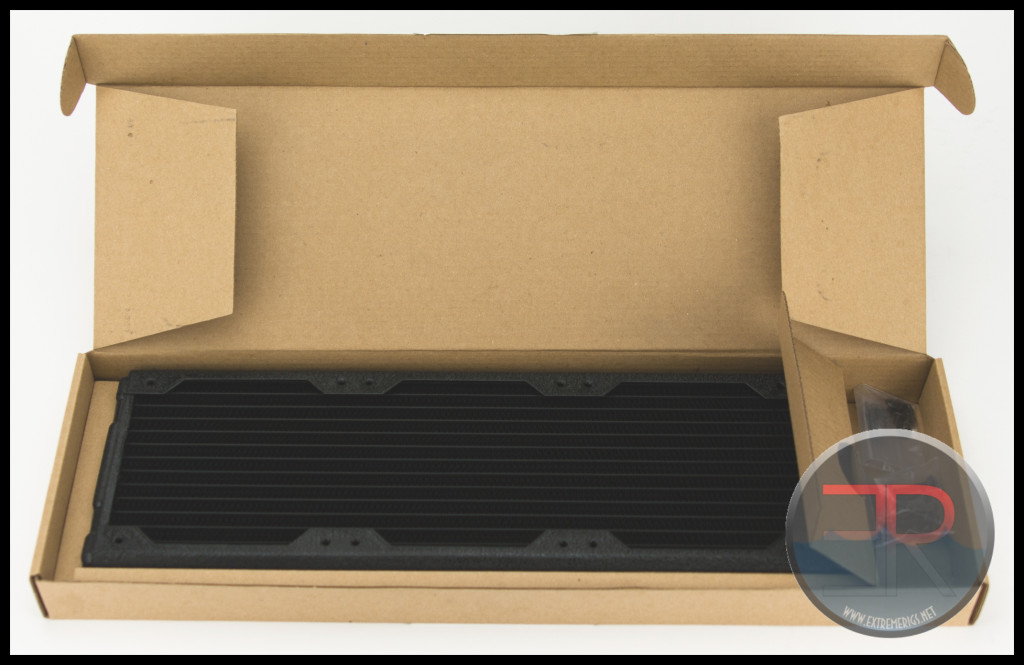
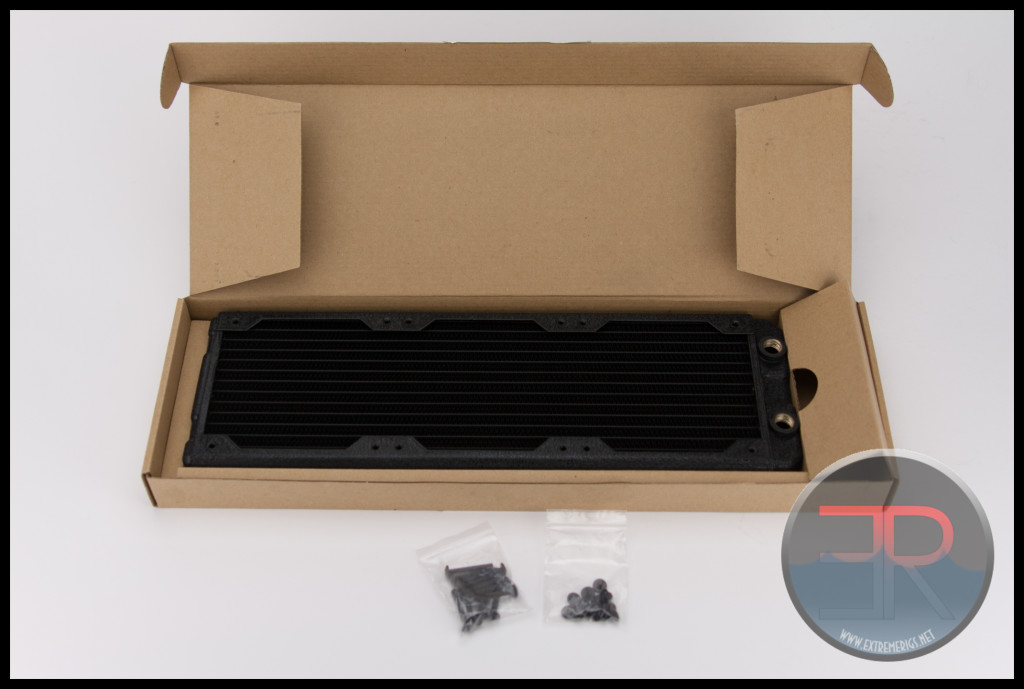

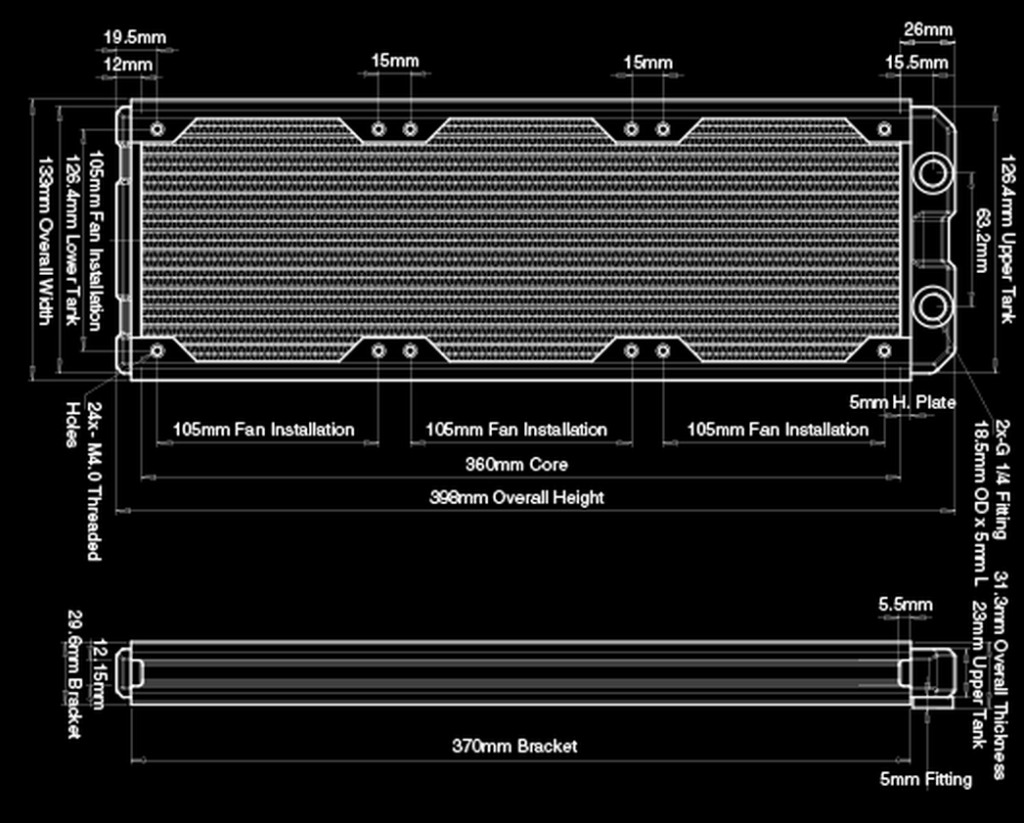
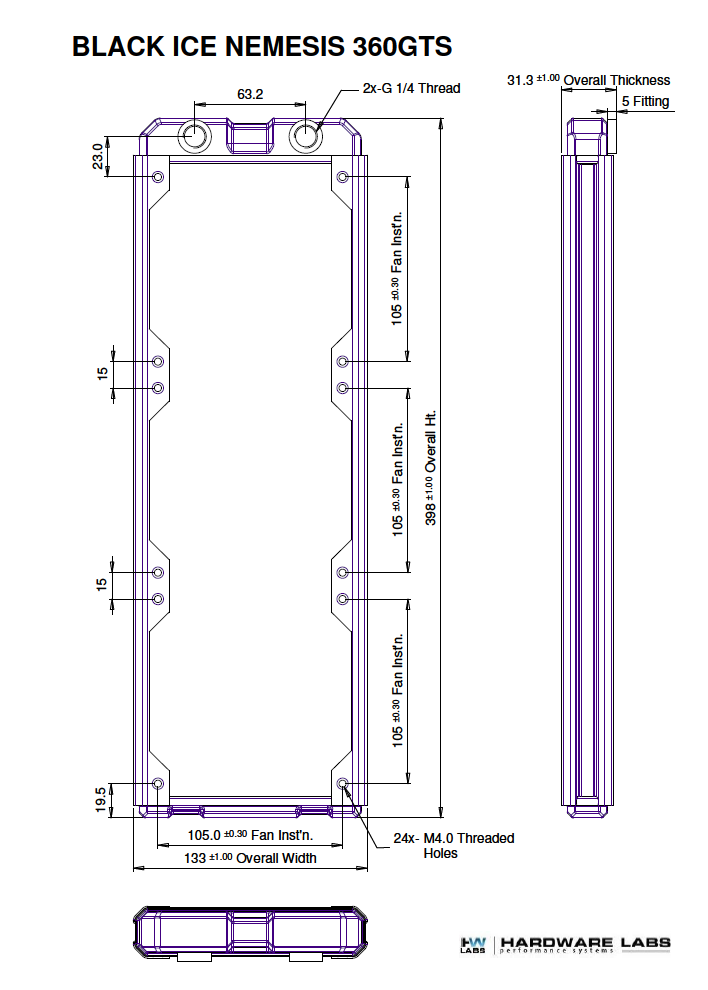


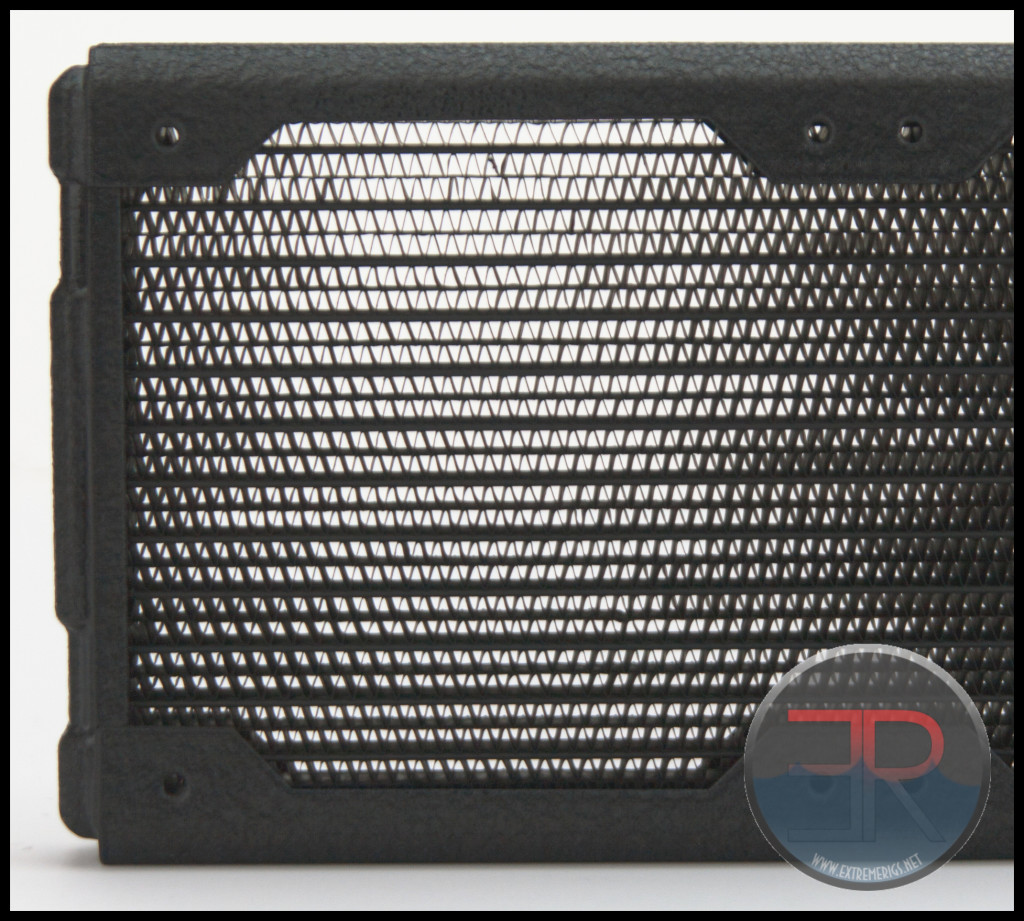
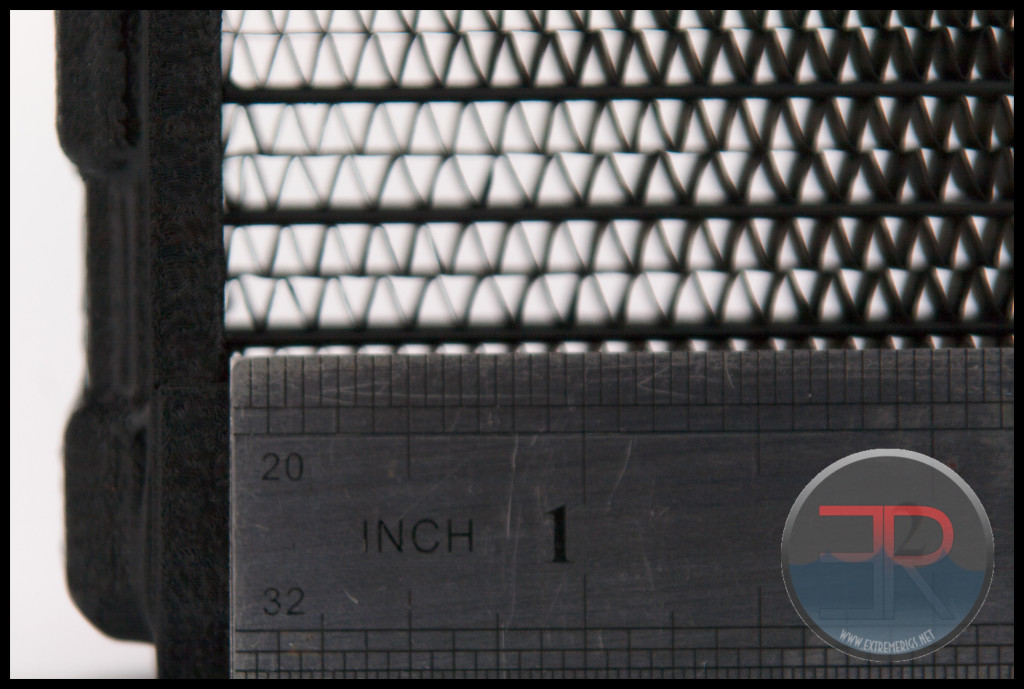
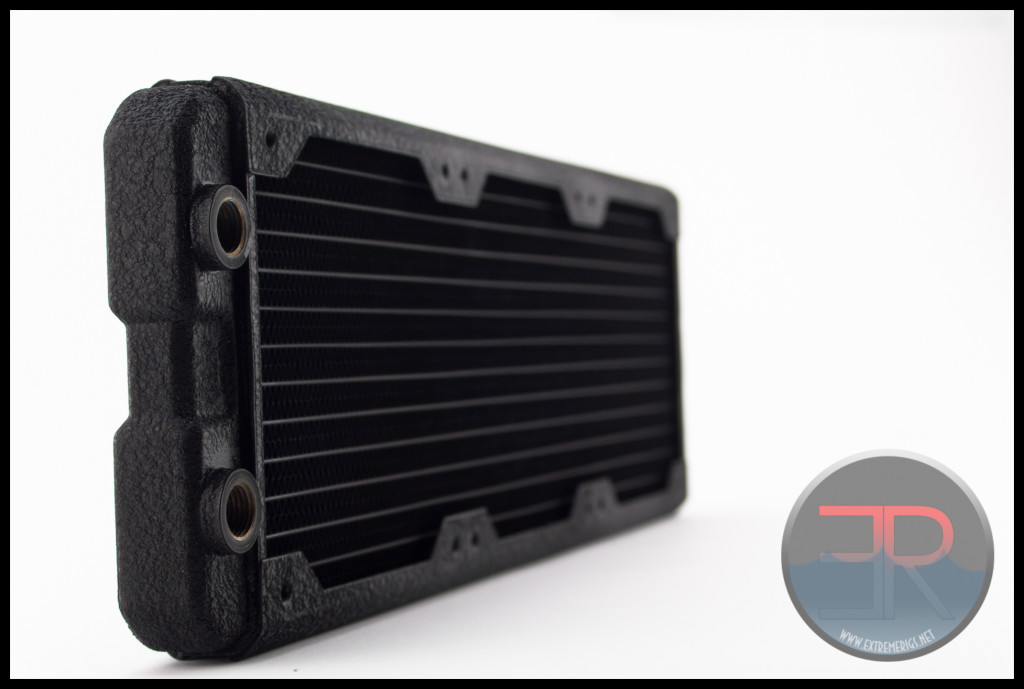
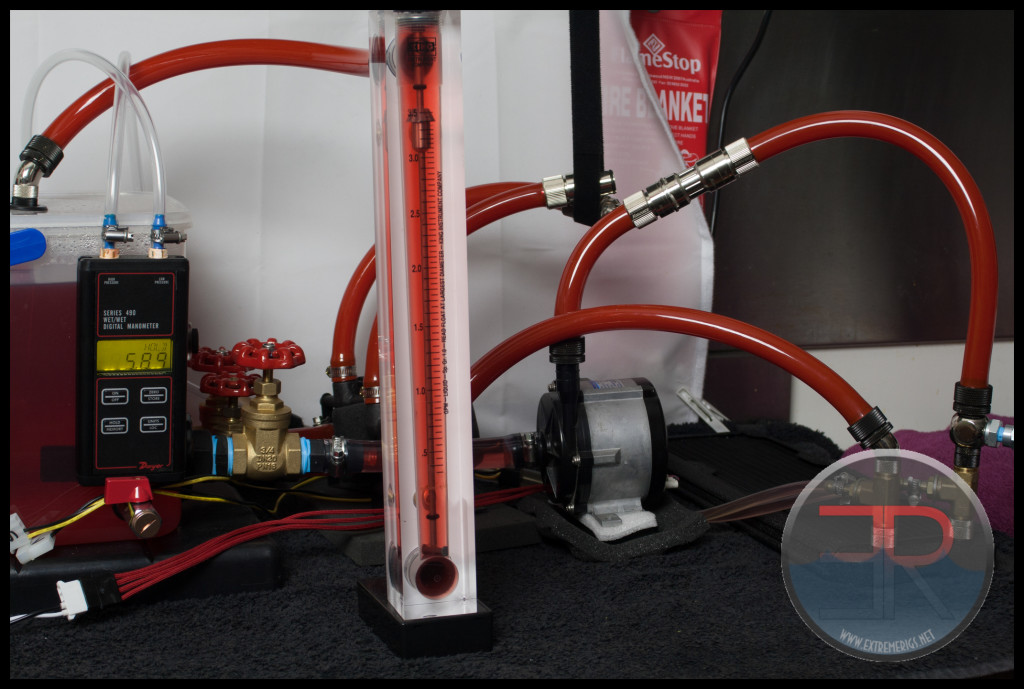
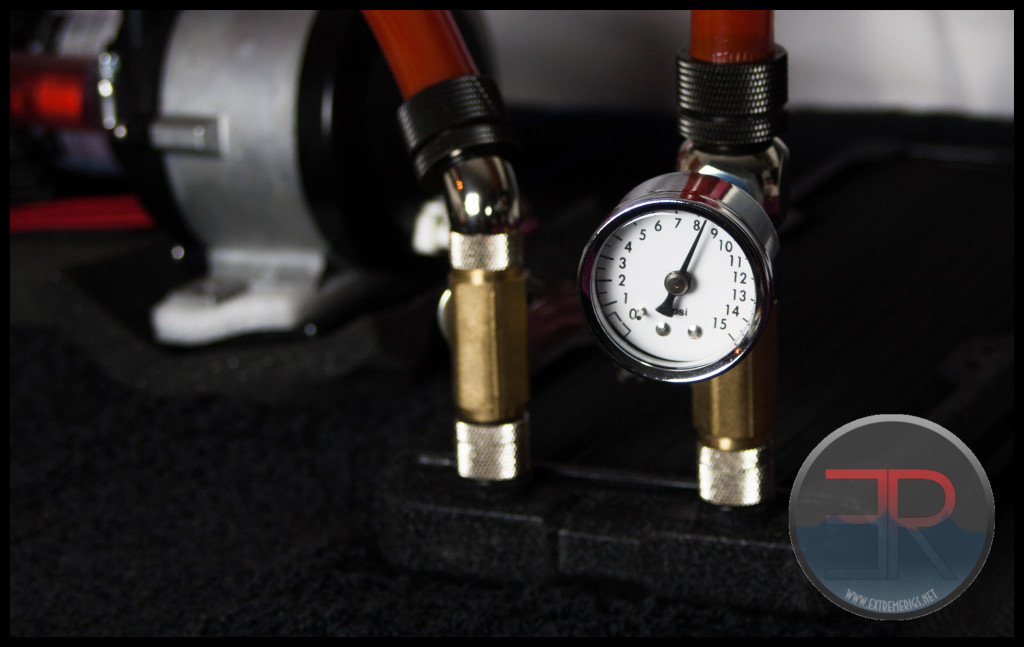
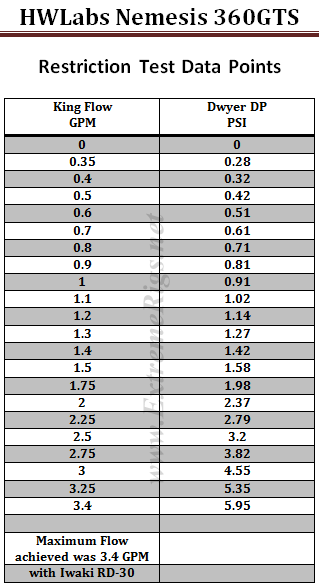
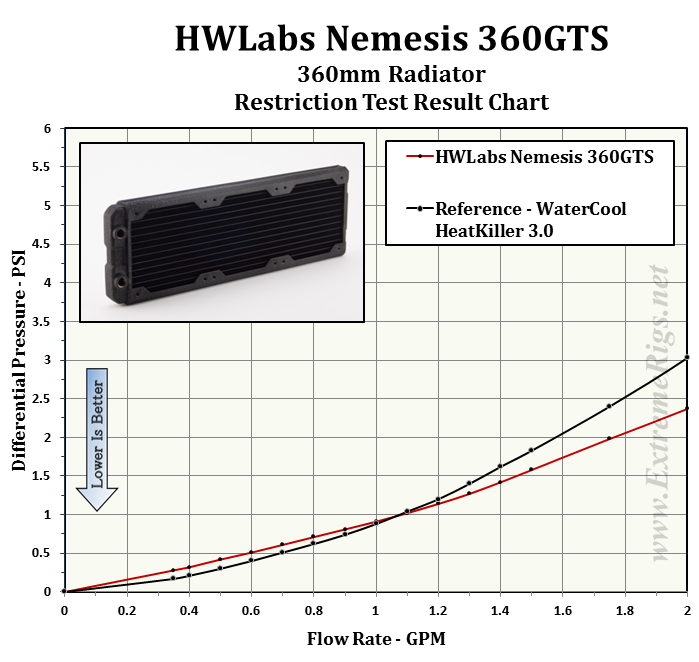
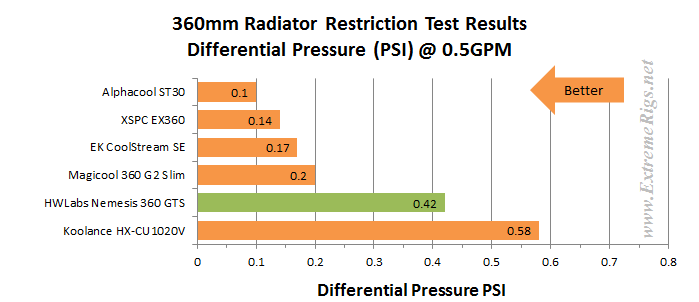
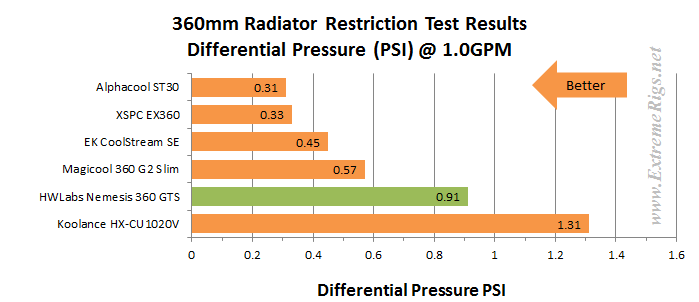
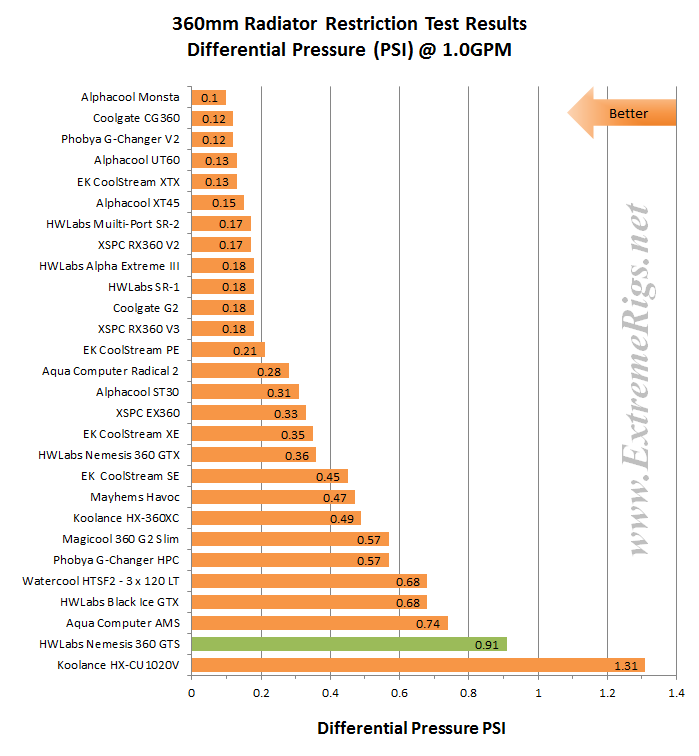
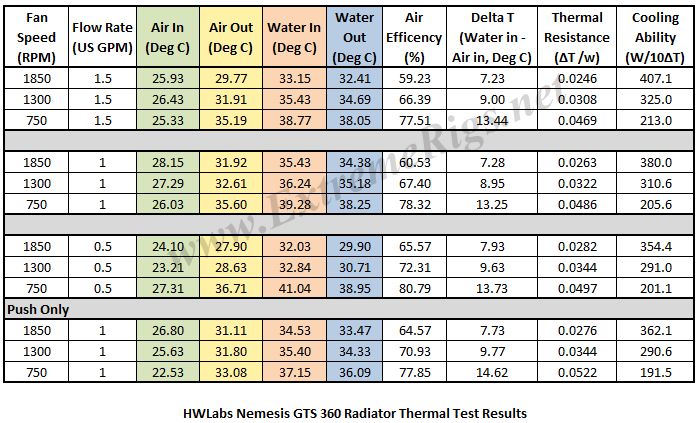
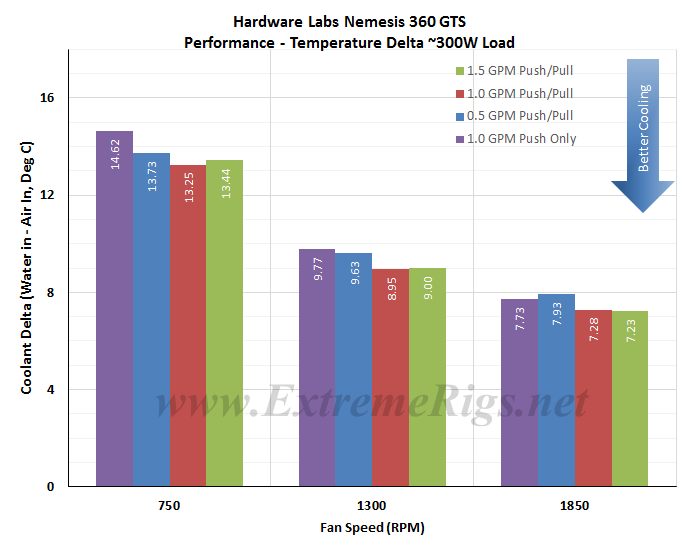
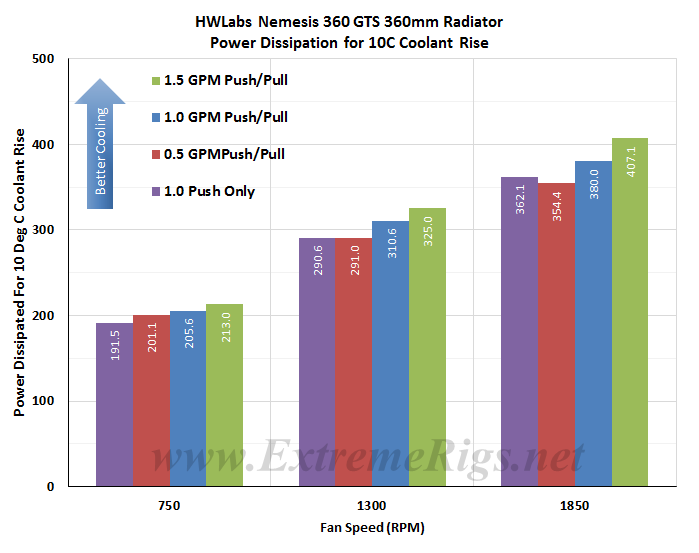
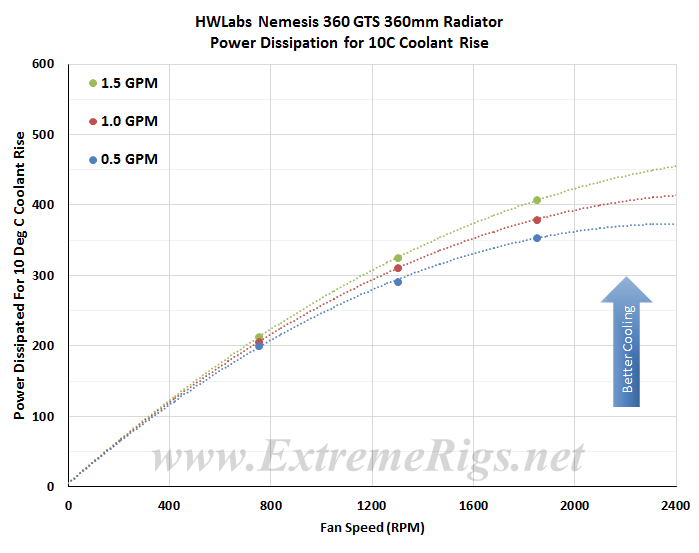
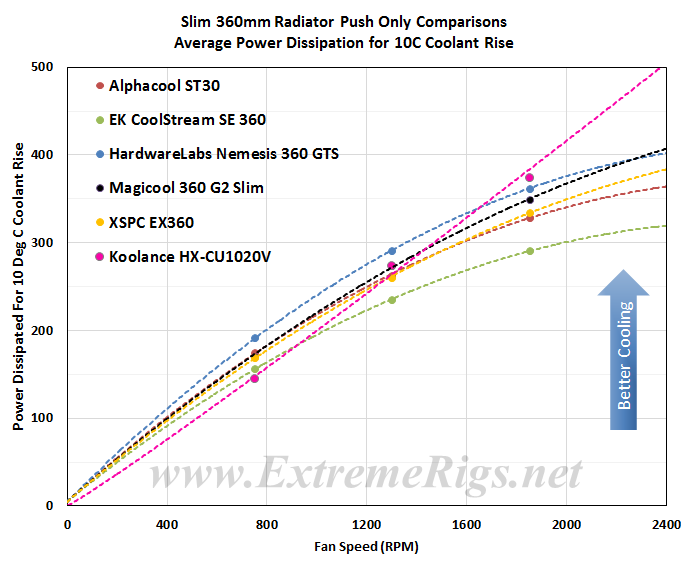
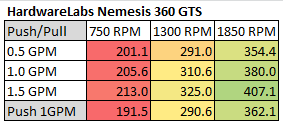
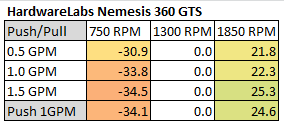
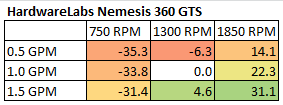
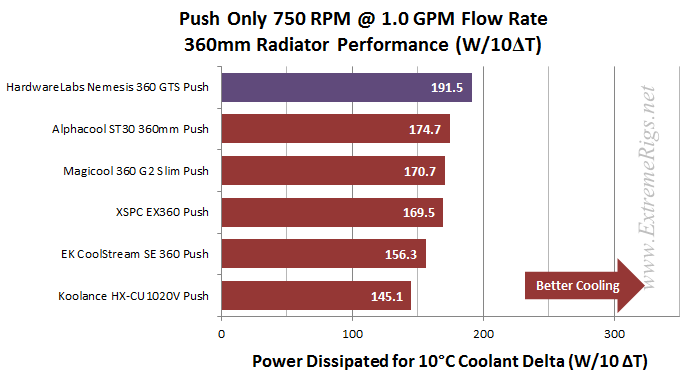
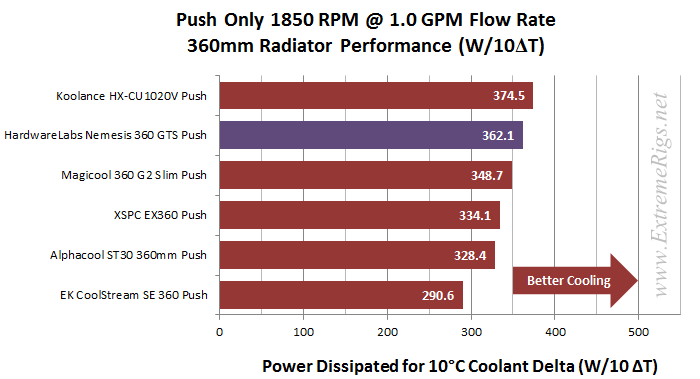

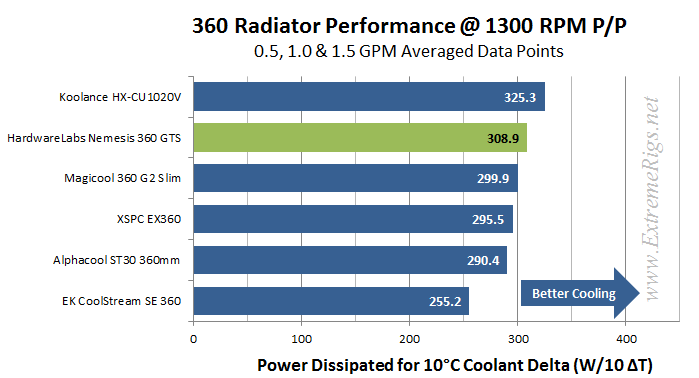
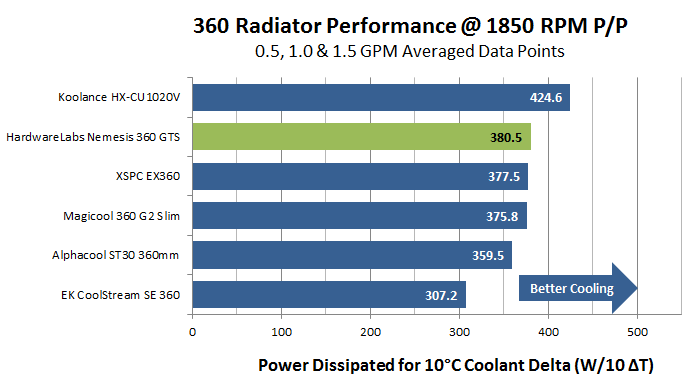
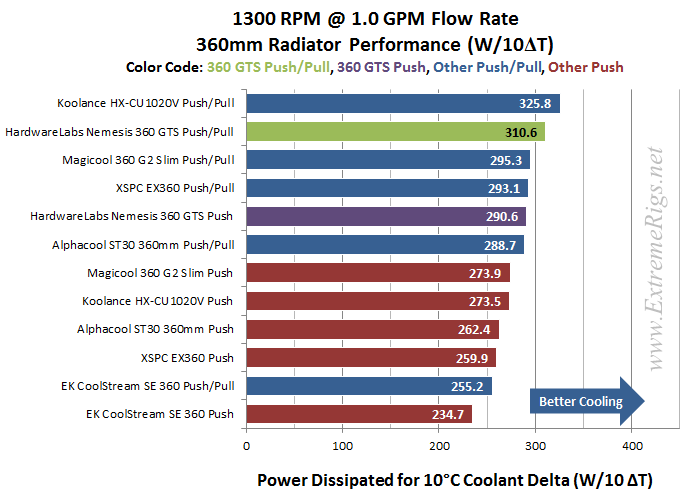
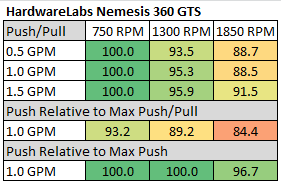
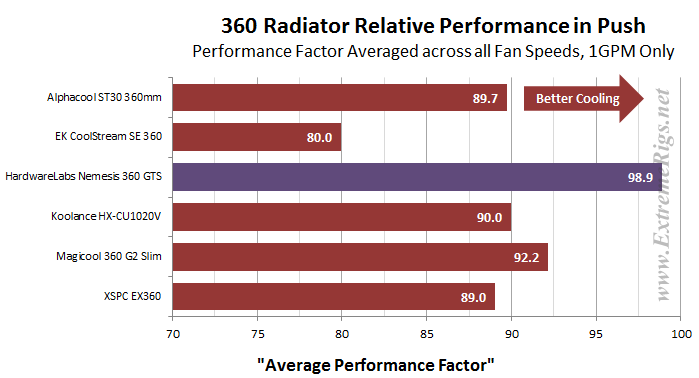
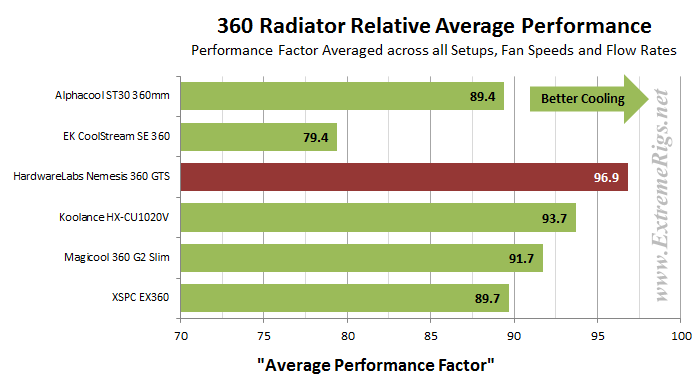

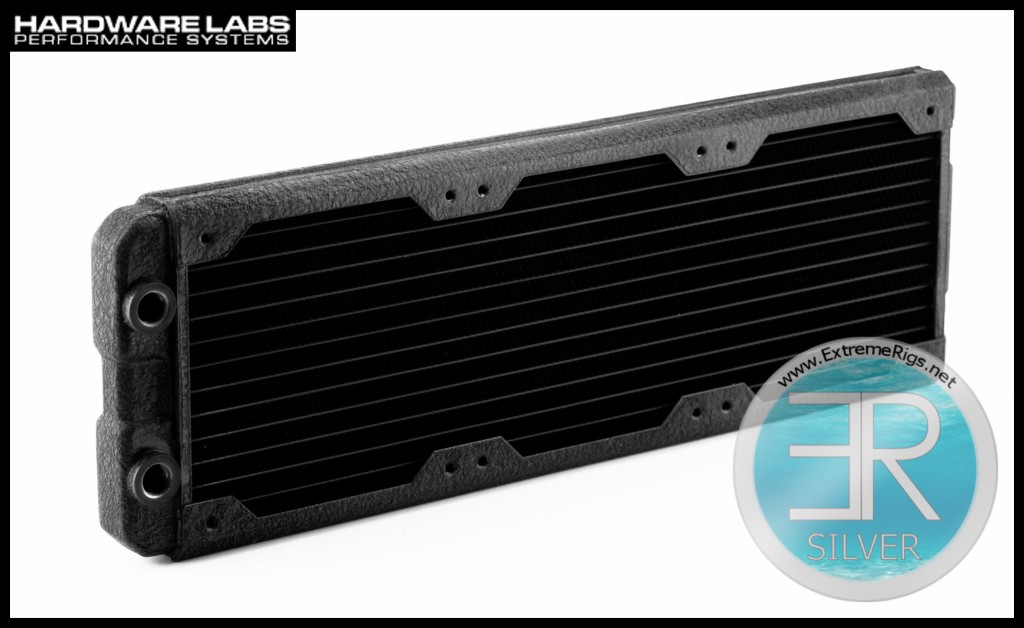




[…] Radiator Coolgate G2 360 Radiator EK PE 360 Radiator Hardware Labs Alpha Extreme III 360 Radiator Hardware Labs Nemesis GTS 360 Radiator Hardware Labs Nemesis GTX 360 Radiator Hardware Labs SR-1 360 Radiator Koolance HX-360XC 360 […]
I wish they did multi port versions of the Nemesis GTS. That would be the logical next design evolution for HWLabs.
What are the implications for using a highly restrictive rad like the 360gts? Does it play nice with other rads in a multi rad cpu/gpu cooled rig?
thanks
Hi David,
This is a great question, that is rather complicated to answer, as so much of the detail is reliant on the other components in you water cooling loop.
I’ll try to make the answer as simple as possible to understand, even if some the terminology isn’t technically correct.
So…
Let’s start back with the pump/s & pump top set up (which I’ll just call pump) that one may be using as it is the heart of any water cooling system.
The pump has a maximum amount of “power” with which it is able to move the coolant.
The maximum “power” has 2 dynamically linked properties which we call “Flow Rate” and “Pressure”
As one of these properties goes up, then the other must come down, because the pump has a limit on it’s (maximum) “power”
So let’s imagine that the pump is set up in a loop all of it’s own, with no other components.
The flow rate will be very high because the restriction level is low and the none of the pump’s “power/pressure” is needed to overcome any restrictions.
Now – if we start adding in components such as blocks and radiators we are placing restrictions the pump must overcome.
To do this the pump’s “power” is dynamically changed depending on the restriction level of the components.
More restriction = is more pressure needed by the the pump to get the coolant through the block/radiator….
which results in a lower flow rate.
So with a restrictive radiator like the 360GTS it will play nicely with other components in the loop.
The question is, does your pump have enough “power” to achieve a flow rate you desire after using up “pressure” on the components.
If nothing else, that should get you thinking 🙂
wow, perfect explaination.
Wonder if anyone knows how much the 360 GTS Nemesis weighs in grams? I almost replaced it with the Coolgate 360HD as the specs seemed better but when I held both in my hands it seemed liked the Nemesis GTS 360 was heavier as in better materials and more copper and had just as much radiator height internally though the 360hd had a taller casing and weighed 790g. Could not find wieght info published online anywhere. Mine is the X-Flow version however. Thanks
[…] reviewed the regular Nemesis 360 GTS for the Extreme Rigs Rad Round Up 2015, and we have also featured it’s data in some reviews which […]
[…] offering from HWLabs and is the thinnest of the 140 rads that we’ll be looking at. The Nemesis 360 GTS really surprised us in the 360 roundup as it was competitive with larger radiators despite […]
[…] we reviewed the Nemesis 360 GTS last year, we may make a comparison or two between the 280 and 360 variants. The 280mm version only […]
Thanks for the excellent review. I really can’t figure out if this rad is for me though?? I will be using x2 360 rads to cool a 5820K+1080 GPU, using lower RPM fan speeds, but the flow restriction issue has me concerned. The Alphacool Nexxxos ST30 360 seems VERY close in performance, but with better flow restriction. Really don’t know which one to go for?! I have an EK-XRES 140 Revo D5 PWM pump/res.
I’m in the same situation as you…..
I also have the Ek X-Res 140 Revo D5 and also like to know what’s the better 360m slim rad at the moment?
Will the Nemesis GTS 360 work ok with this pump? I will only have the an EK block for the cpu in my loop.
Thanks.
A D5 puts out about 4.5 PSI at 1GPM, let’s assume 1 PSI for your cpu block and 0.5 PSI for your gpu block. 1 Nemesis GTS rad is ~1 PSI at 1GPM. So that’s a total of 3.5PSI at 1GPM which is well within reach of a D5 🙂 So yes the GTS will be fine. It’s more of a problem if you’re going to be using 3-4 as well as multiple gpu blocks and a weaker pump 🙂
What about pump like Magicool DCP450?
Im planing to use Alphacool Eisblock XFX – its very restrictive
2x Nemesis GTS 240mm – again… very restrictive
and single GPU full cover block.
Comments are closed.